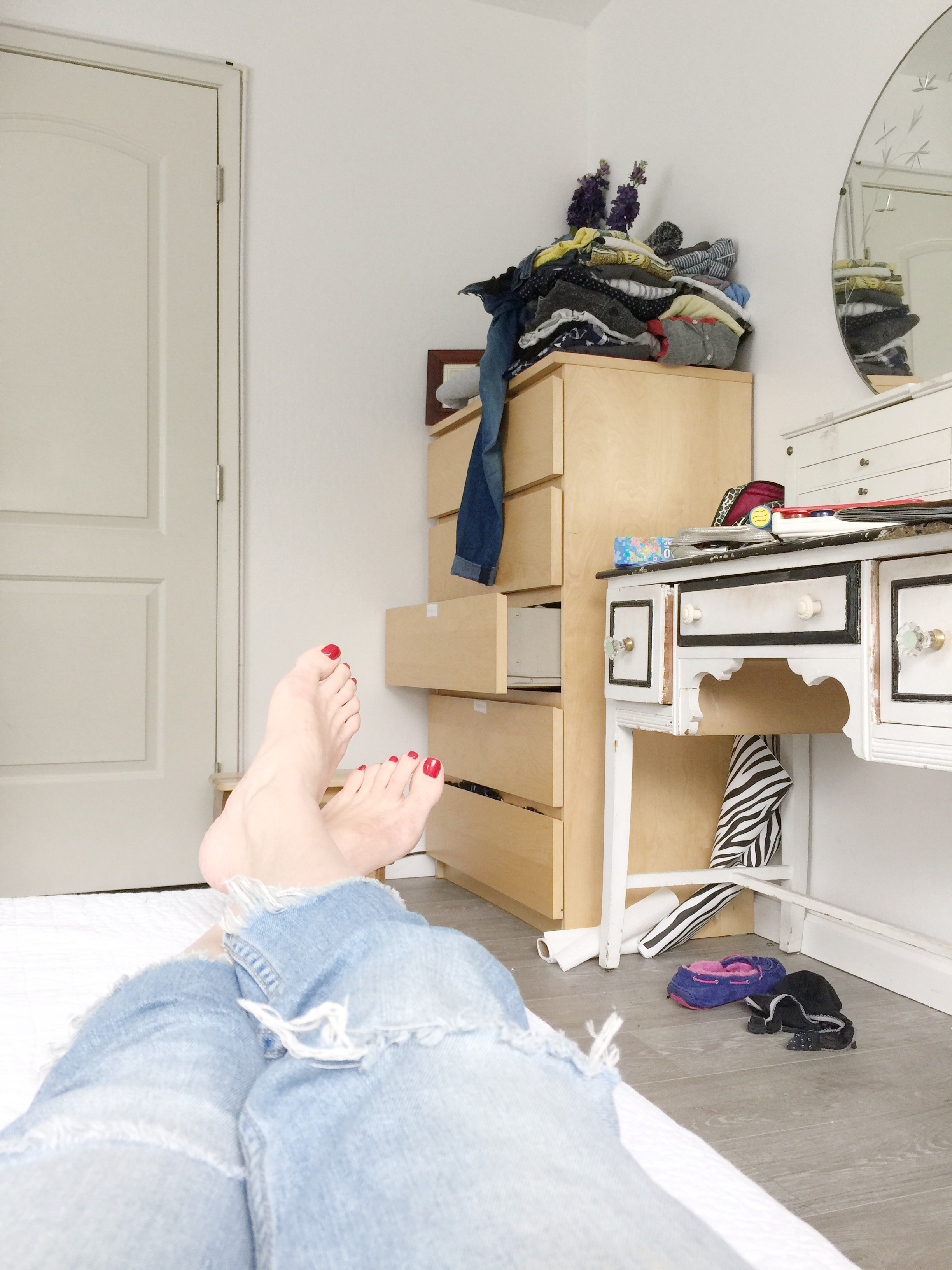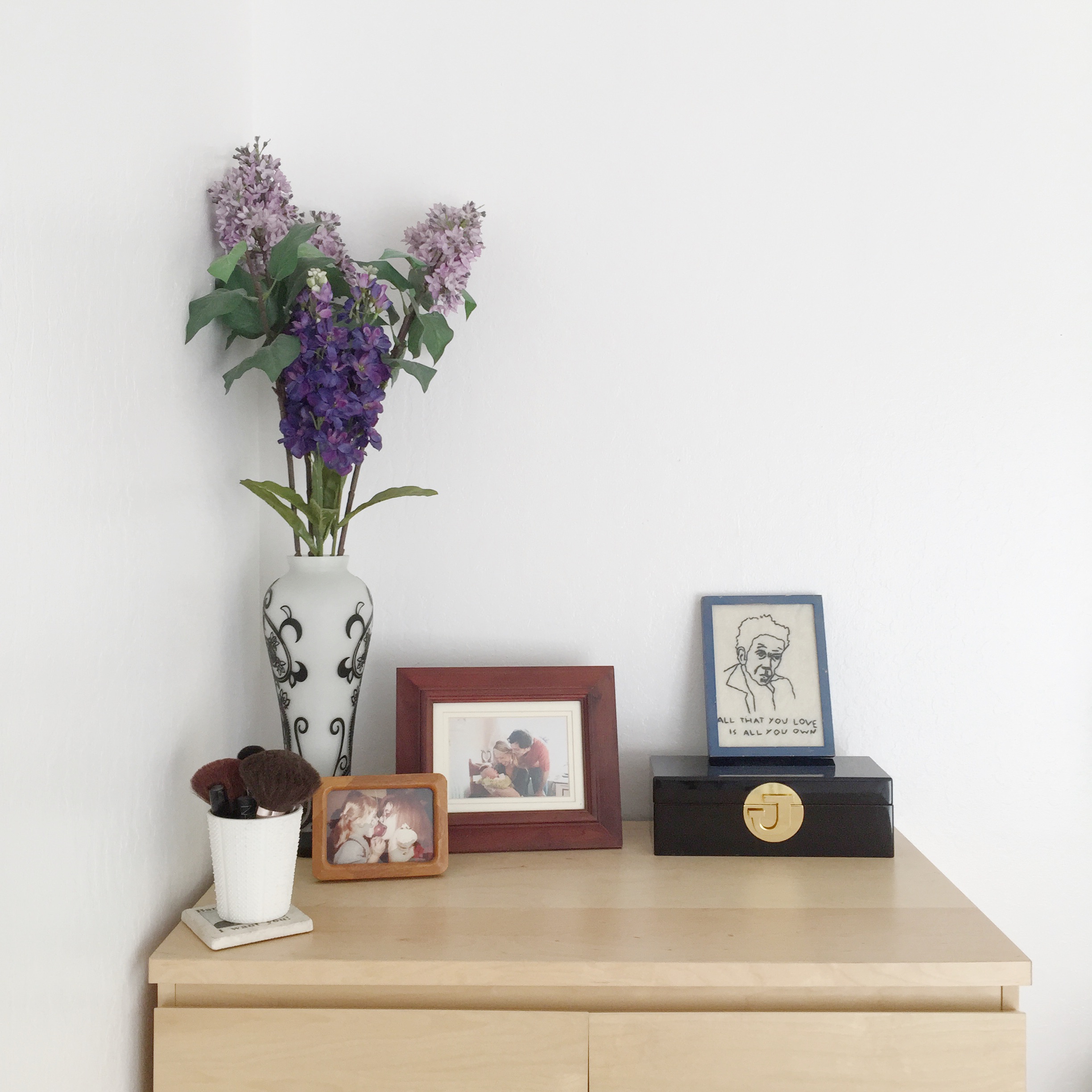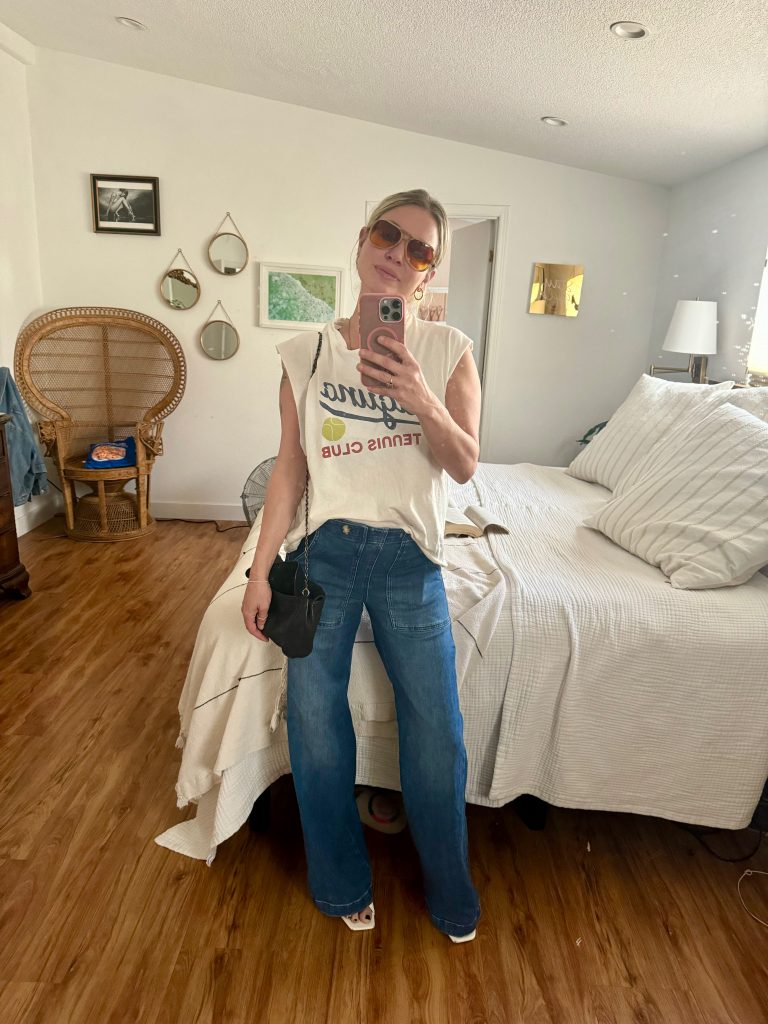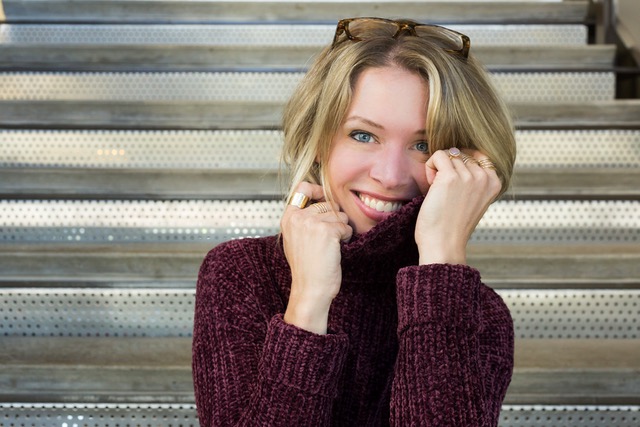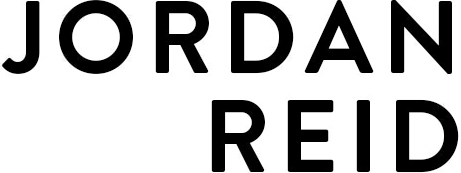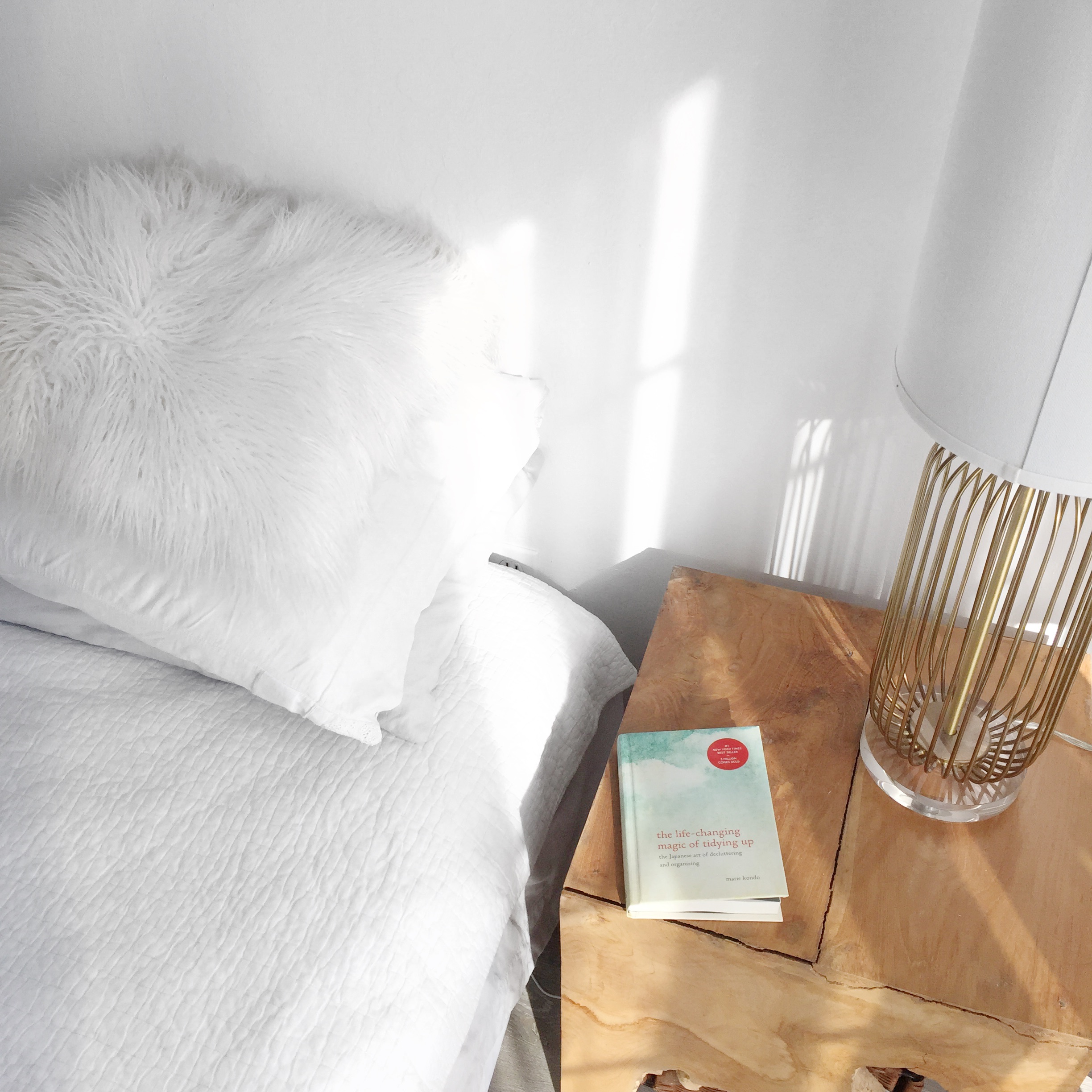
I went into The Life-Changing Magic of Tidying Up – the New York Times Bestseller that’s getting a ton of attention in the press and spawning entire movements – with a healthy dose of skepticism. Partially because…well, “life-changing”? I mean…come on. But mostly because I’m huge on throwing stuff out – it’s literally one of my favorite things to do – and I suspected that her tips wouldn’t be all that revolutionary to someone who’s already drunk the “if you don’t use it, get rid of it” kool-aid.
I mean, really: I’m constantly paring down the amount of stuff I have (which is considerable, I admit, in large part because I’m always picking up props and such for shoots). I give things away to friends; I sell them; I donate them to Goodwill. I can’t stand having items that I don’t use or need laying around. And yet, after maybe three hours of culling through my possessions using the philosophies contained in this book:
(I’m putting the photo after the jump because it’s ridiculous and I’m so excited)
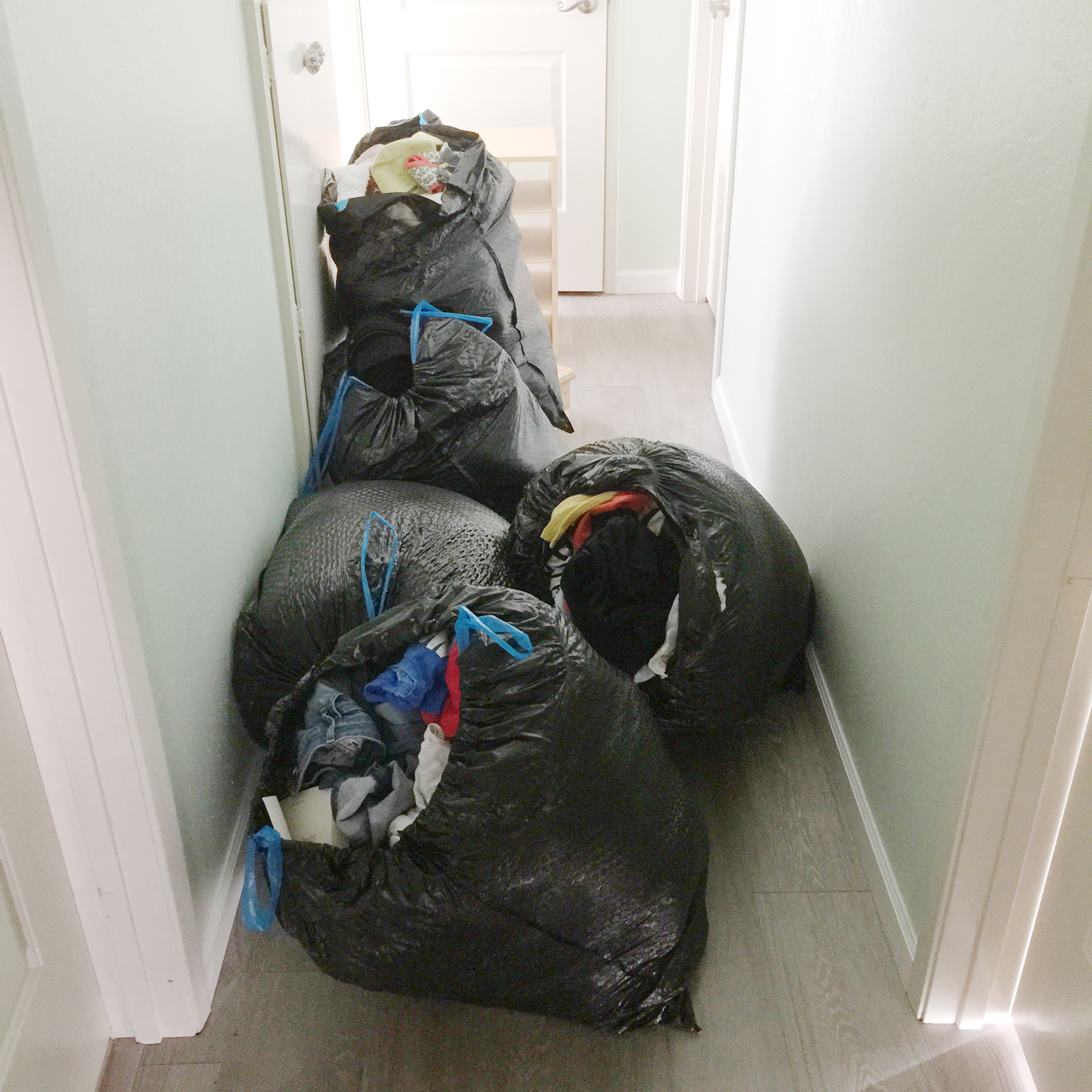
Just to be clear, these are REALLY big trash bags.
Yeah.
That, by the way, does not include any of Kendrick’s stuff: that’s just mine and the kids (and most of it is mine). It’s also about half of what I ended up carting to Goodwill yesterday afternoon, and I suspect about a quarter of what I’ll end up discarding when all is said and done (by which I mean after I attack the garage).
I am exaggerating zero when I tell you that this book has actually changed my life, or at least my perspective on my stuff (and I think we can all agree that “stuff” has a tendency to take up quite a lot of head space).
That is SUCH A WEIRD THING TO SAY.
But the book isn’t just “advice” – it’s philosophy. I put it down one evening, and immediately began tearing through the house because I could not wait one more moment to get started. And 24 hours after my initial purge, for real: I cannot believe the extent to which these slight adjustments in perspective have affected both the way my home looks and feels…not to mention my head.
Let me first be clear about one thing: some of the author’s advice is flat-out nuts. There’s a big to-do about how clothing has feelings and gets bummed out when other clothing is piled on top of it, and how balled-out socks get stressed so you should fold them, and how you need to “release” your unused clothing so that it can be happy. I can’t quite get on board with the concept of stressed-out socks, because they are socks. They do not have to worry about this month’s water bill. However, I do think that our possessions create emotions in us, and that giving the things that you surround yourself with a little room to breathe makes you feel the same way: free.
Now that we’ve established that I will not be gently laying my perfectly folded socks side-by-side – like, ever – let’s get to the good stuff. Here is the my favorite takeaway from the book; the one that I’ve been coming back to over and over and over:
When you come across something that you cannot part with, think carefully about its true purpose in your life. You’ll be surprised at how many of the things you possess have already fulfilled their role. By acknowledging their contribution and letting them go with gratitude, you will be able to truly put the things you own, and your life, in order. in the end, all that will remain are the things that you really treasure.
In short: Our lives are filled with things that have already done for us what they were intended to do…and by keeping them around, all we’re doing is obscuring our view of what we really do love and need.
So. Here’s what happened to my house (and my head) after reading this book.
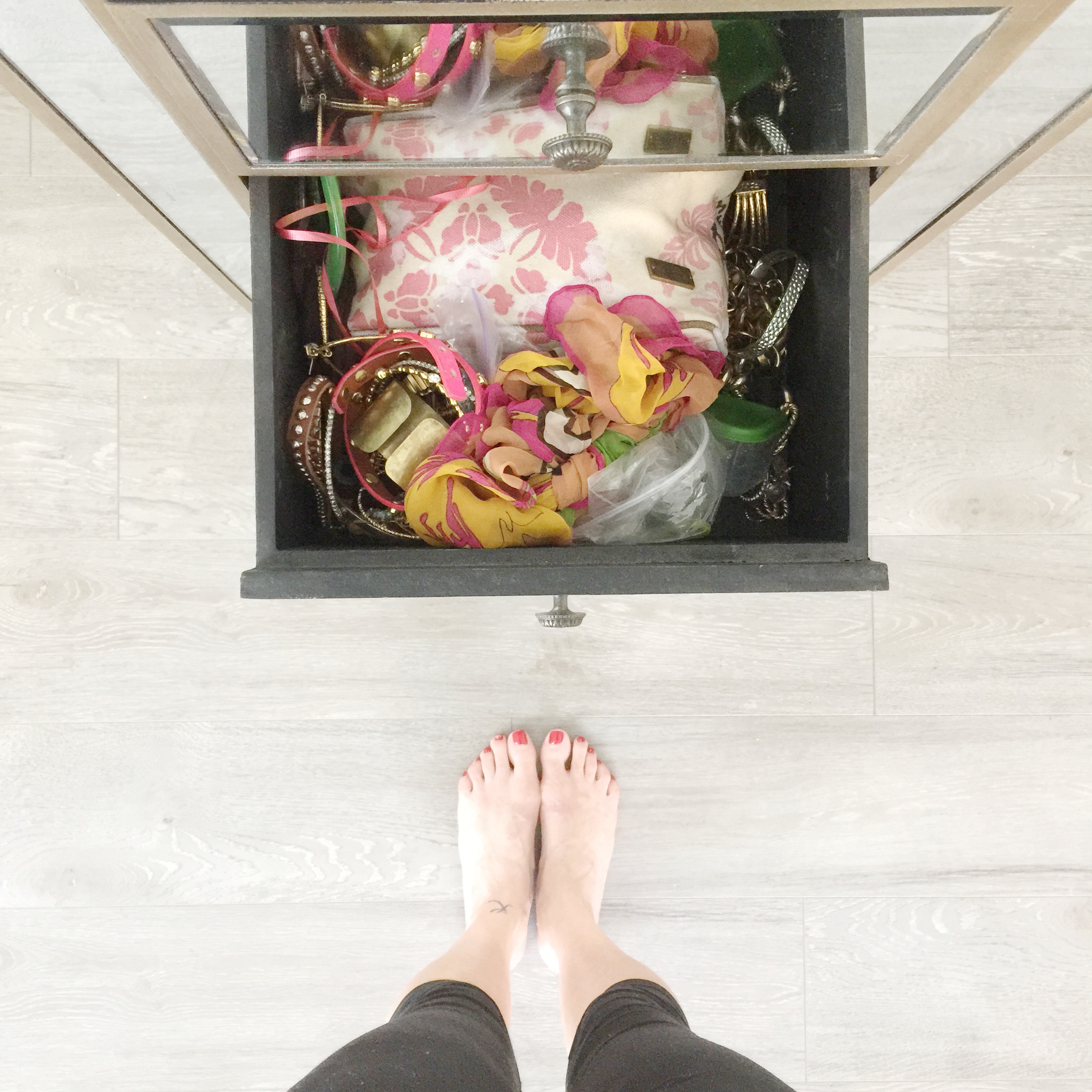
One of three drawers’ worth of costume jewelry and scarves that I’ve been keeping “for my daughter one day.”
I LEARNED WHY I WAS HOLDING ON.
As I sifted through my things (albeit in a less dramatic fashion than the everything-in-the-middle-of-the-floor bonanza that the book recommends) I realized that there are four primary reasons so many of my possessions were making it past countless decluttering sessions, getting trucked across the country again and again while remaining almost entirely unused.
- “My kids might want it one day.” I’ve found myself storing blankets, thinking “Indy might want this when he goes to college.” I’ve found myself keeping extra Tupperware for my daughter’s first apartment. My children are going to college and moving into apartments nearly two decades in the future. More blankets and Tupperware, I suspect, will be acquired. Also my daughter does not need twenty thousand pieces of costume jewelry; five or ten should do the trick.
- “I might be able to sell it at a yard sale.” I love yard sales. I’m really good at them. But you know what I love even more than yard sales? The daily peace of mind that comes from not having stuff I no longer want sitting in my home.
- “I might need it one day.” I can trace the roots of this one to the years I spent living paycheck to paycheck, getting stressed out by the possibility of having to replace a lightbulb: it’s hard to throw something away if there’s even a chance you might need to buy a new one later on, because that feels like such a waste of money. But how many things are we holding on to “just in case” that we will likely never even remember that we have, let alone remember to use? In one closet, I found an entire box of wires. I have no idea what any of them are for, but it’s paralyzing to toss them because what if an electronic pops up for which one of those wires would be required? But you know what would actually happen then? I still wouldn’t know which wire went with what; I’d go to Lowe’s and get a new wire. (Also any piece of electronic equipment that’s sitting around our house without its wires should probably go, too.)
- “It’s too much a part of my past.” This one is hard. There are so many things that I held on to because of the memories – a now-moth-eaten cashmere sweater I snagged from the wardrobe department at Strong Medicine when I shot an episode; an old Mother’s Day card that is now sitting stacked under a bazillion things on my desk; a random little gift from my son that wasn’t, like, the most meaningful thing he’d ever given me but that I felt compelled to hold on to anyway. What I did with this stuff: used the book’s technique of holding it, appreciating the role that it had played in my life, silently thanking it for having fulfilled its purpose, and letting it go. And it worked. The tchotchke my son gave me isn’t the point; it’s going to end up unseen and forgotten in the bottom of a drawer. The fact that he gave it to me at all; that’s what matters.
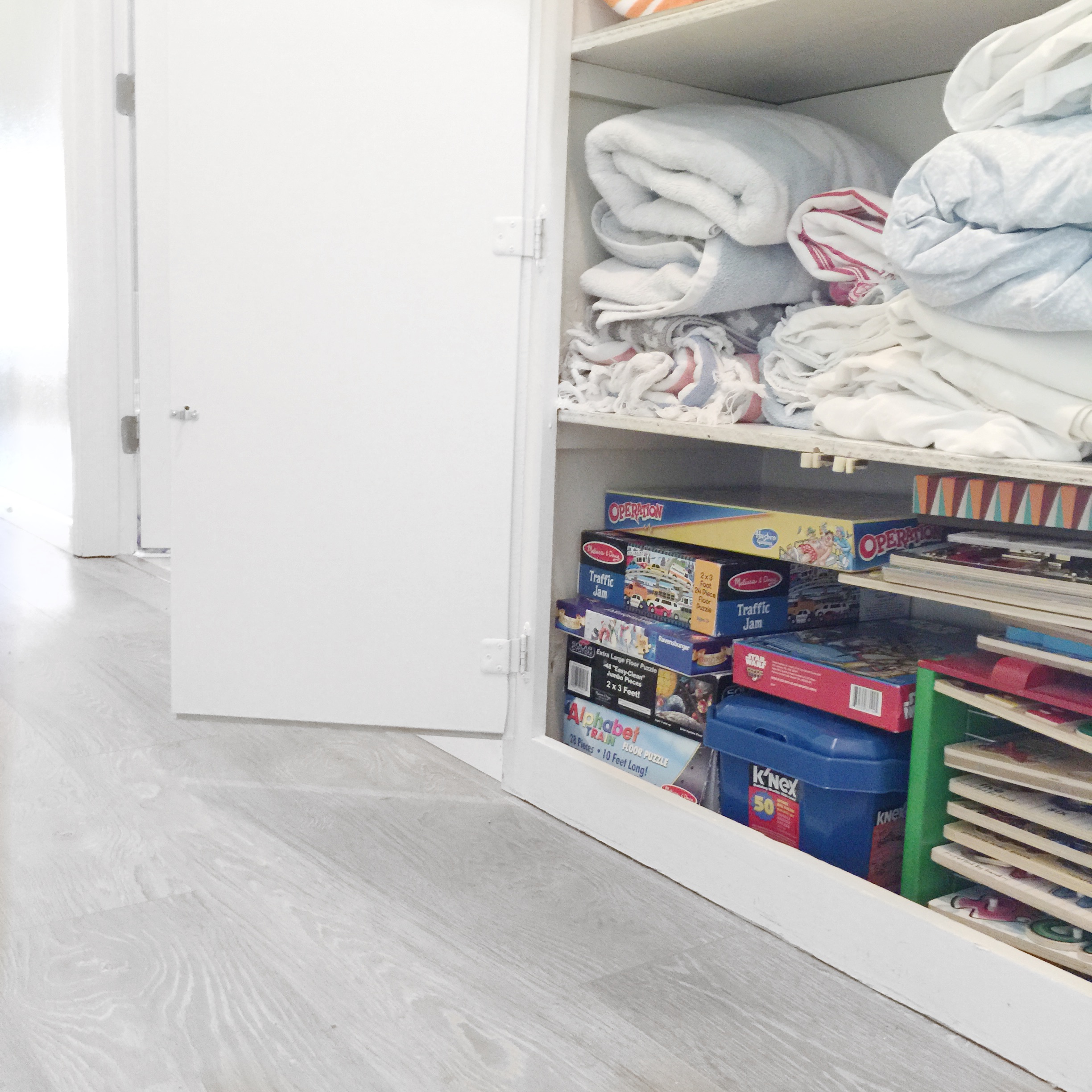
I freed up so much space in our linen closet that it now doubles as game storage, woooo.
I LEARNED WHAT TO LET GO OF (AND HOW TO LET IT GO).
A brief smattering of some of the items that I donated yesterday afternoon:
– My first nice duvet cover, purchased for my first post-graduation apartment. Why I held onto it: It’s so pretty, and I remember how nice it looked in my first apartment. Why I let it go: It’s a little threadbare, and I always end up using one that’s in better shape. The duvet cover’s function in my life was to make my first apartment feel like a place I wanted to be, and that function has been fulfilled.
– A completely serviceable extra comforter. Why I held onto it: It seemed wasteful to get rid of it. The thought process I used to let it go: I have three completely serviceable extra comforters. All that excess comforter-owning is doing is taking up a lot of space.
– Two perfectly good eye masks. Why I held onto them: I used to use them every single night, because they helped with my insomnia, and now they feel like a bedside table essential despite the fact that I’m no longer struggling with a sleep disorder. Why I let them go: Just because something used to be a part of my daily life doesn’t mean it has to remain that way.
– Several baby blankets. Why I held onto them: Because I can remember how my children looked wrapped up in every single one. Why I let them go: Just because my children touched a piece of fabric once does not make it a special family artifact. Obviously I kept our favorite ones, but there is no reason to keep a massive stockpile of Aden and Anais stroller throws.
– Some really cute (and expensive) stuff that I bought at Destination Maternity when I was pregnant with Goldie. Why I held onto it: Because it’s cute. And expensive. And “totally works as non-maternity wear.” Why I let it go: I have literally never worn a single piece of it post-pregnancy. Because it’s maternity wear.
Ugh.
And finally: here is a corner of my room that I don’t know if you’ve ever seen before. The reason you haven’t seen it is pretty obvious, I think; it’s tucked away behind my bedroom door, and so it ends up being my junk-pile spot – the area where I put the things I don’t feel like putting away right now, or that have no real place to go. Overstuffed drawers. My son’s puzzle. Papers upon papers. A bra that I should really throw out but haven’t yet.
Here is what that corner looks like now:
I used to avoid looking in the direction of this dresser when I was laying in bed, because all it did was stress me out: it was just a pile of crap that I wasn’t dealing with. And now, when I’m laying in bed and my glance falls on that corner, what I see is a handful of things that I genuinely love, and that make me happy to look at: nothing more, and nothing less. I cannot tell you how surprising it was to discover how much peace this gives me.
Not all of the advice in this book is perfect, or even reasonable, but at the root of it is this: letting go – even (or perhaps especially) when it’s hard – feels so good. With your stuff, and in your life, it’s worth making the effort to say good-bye to the past.
